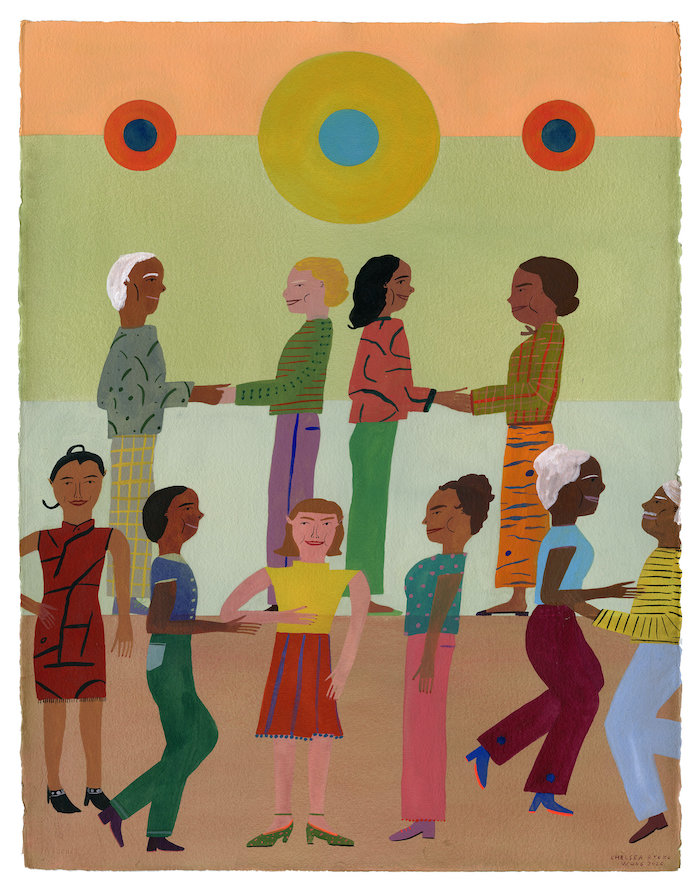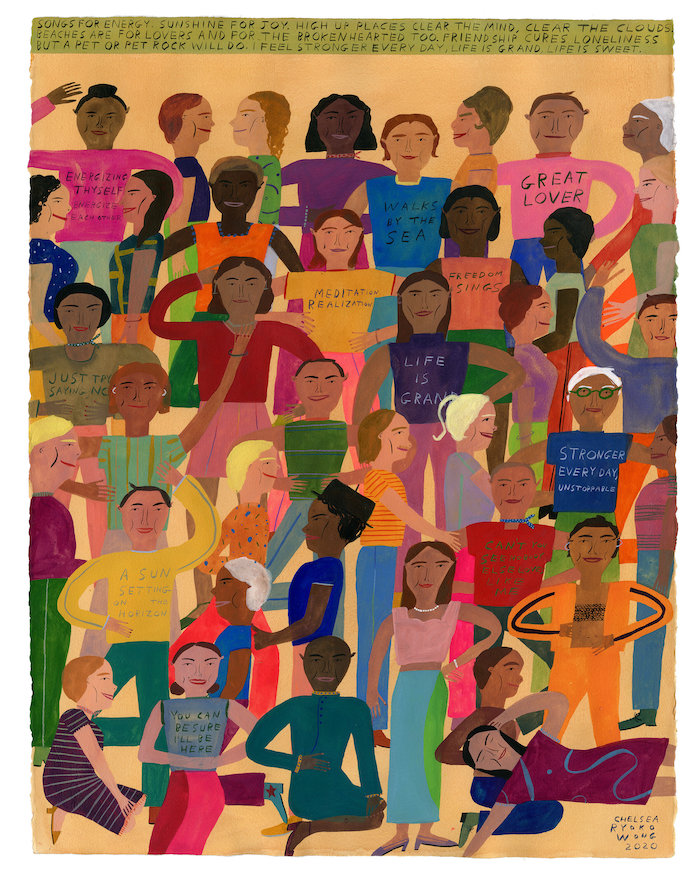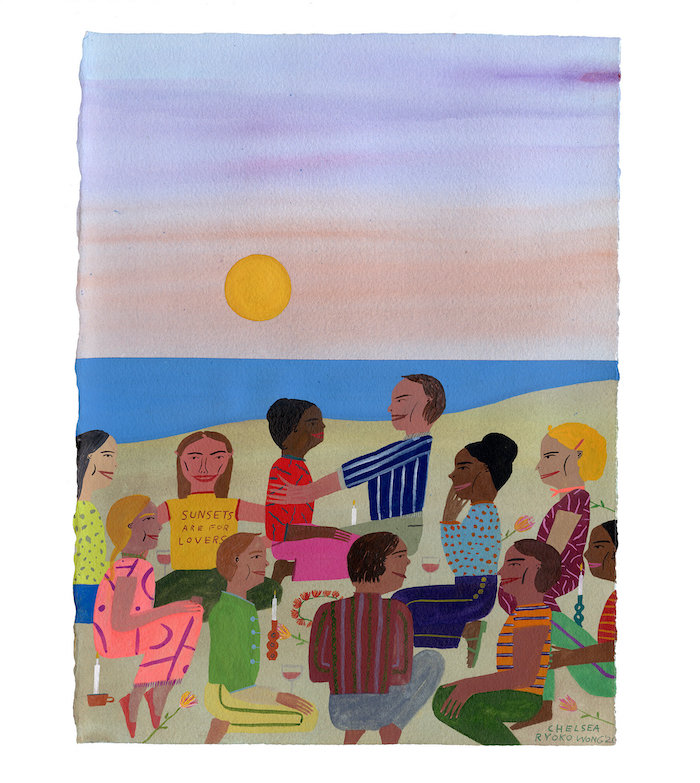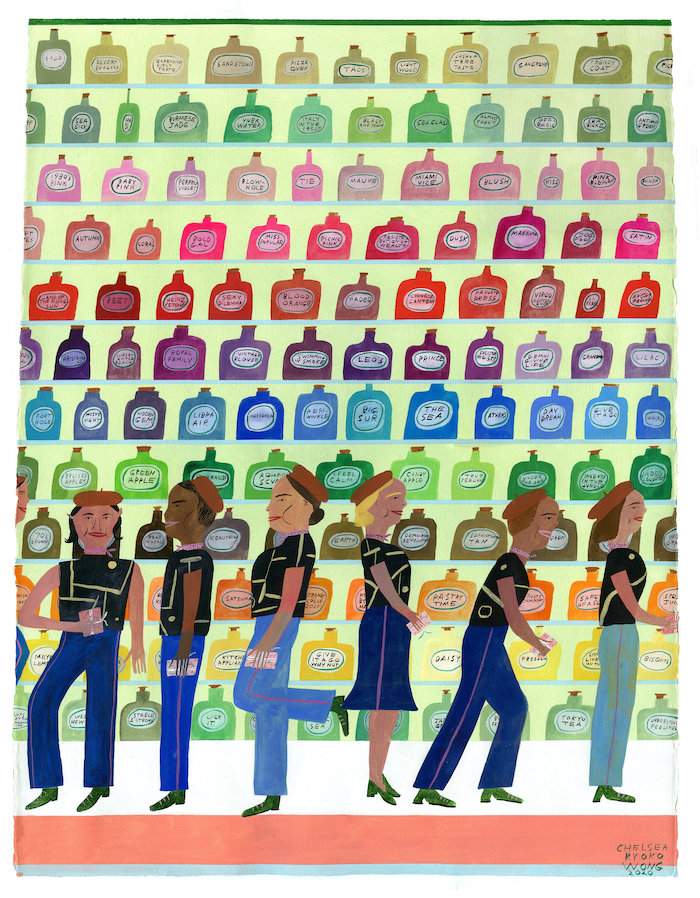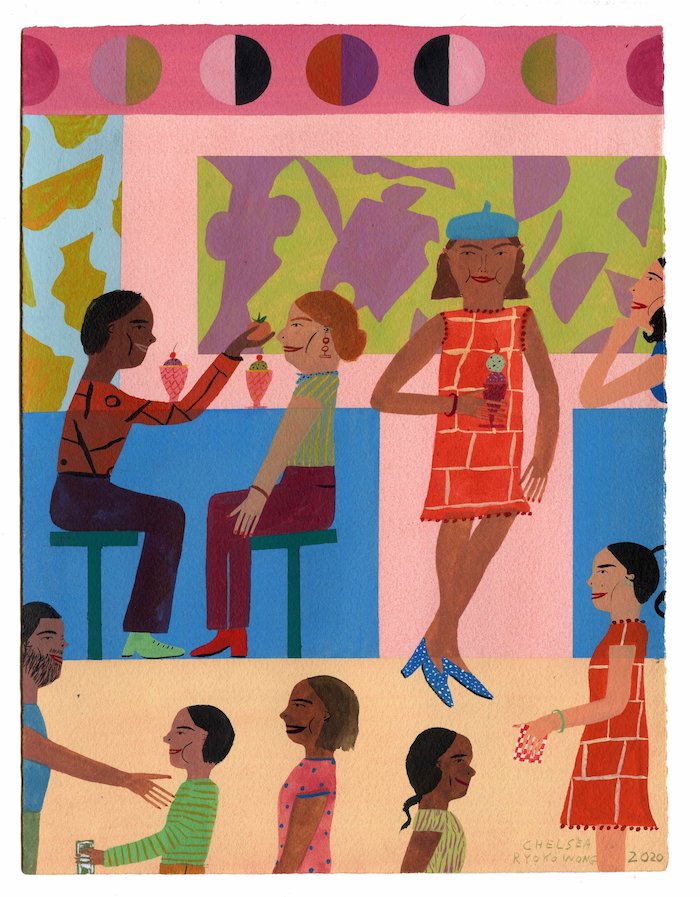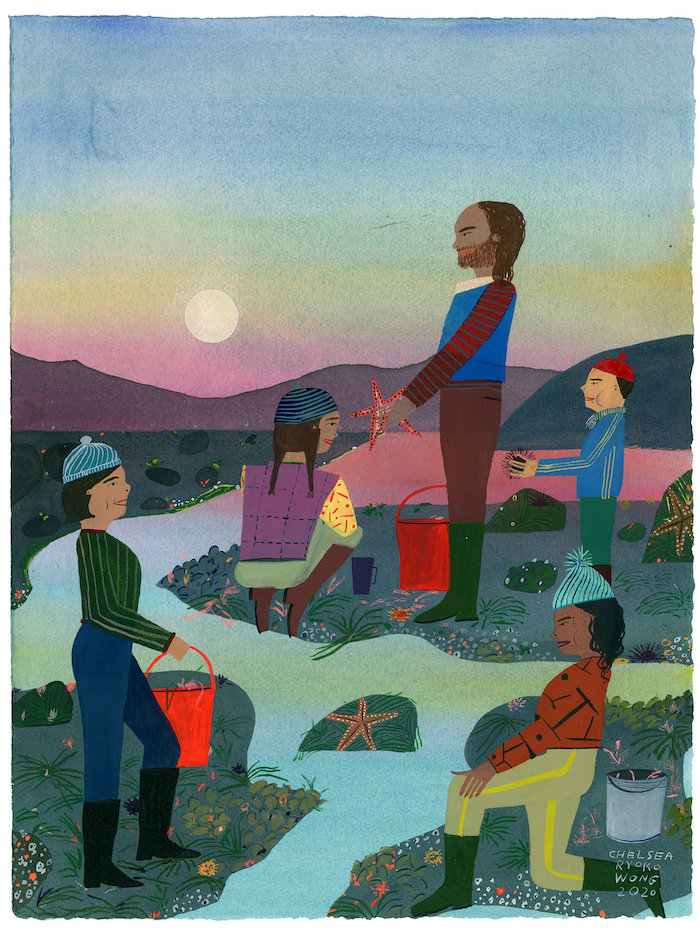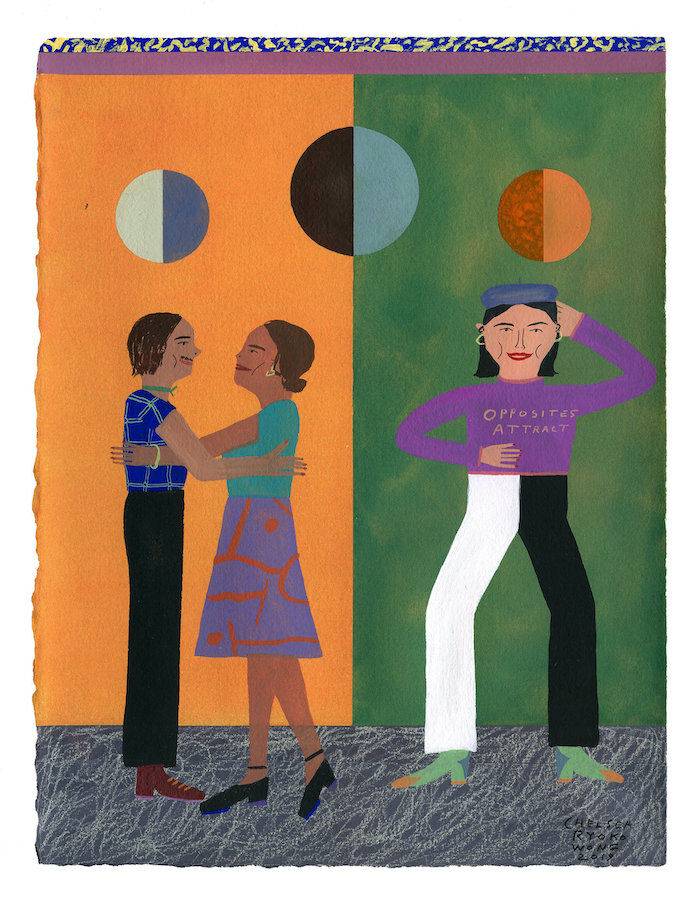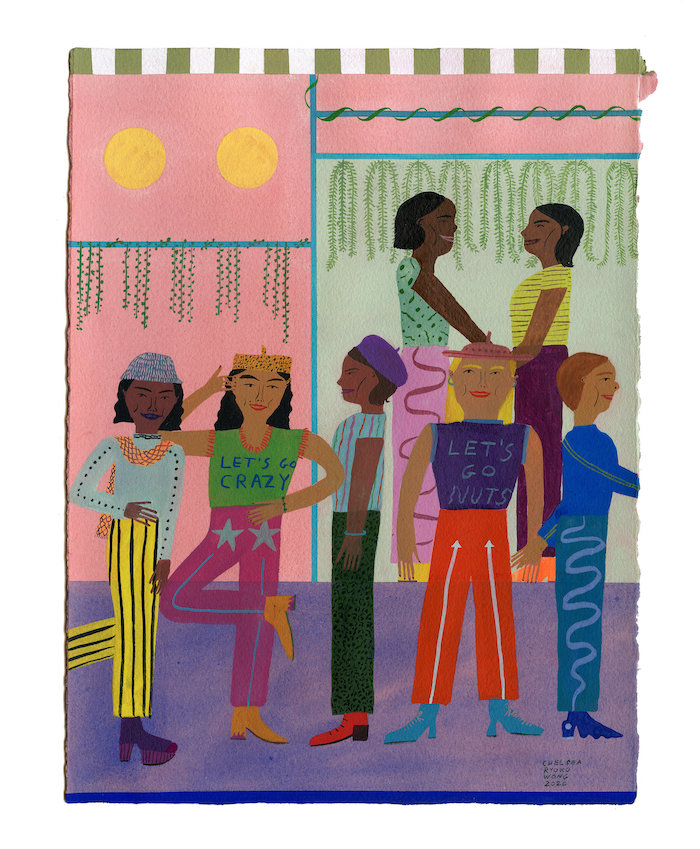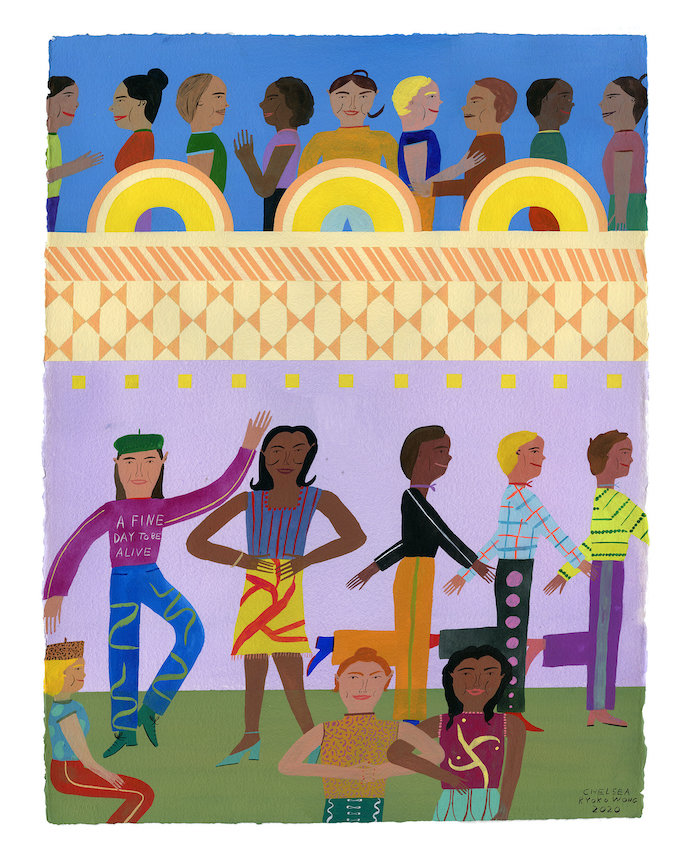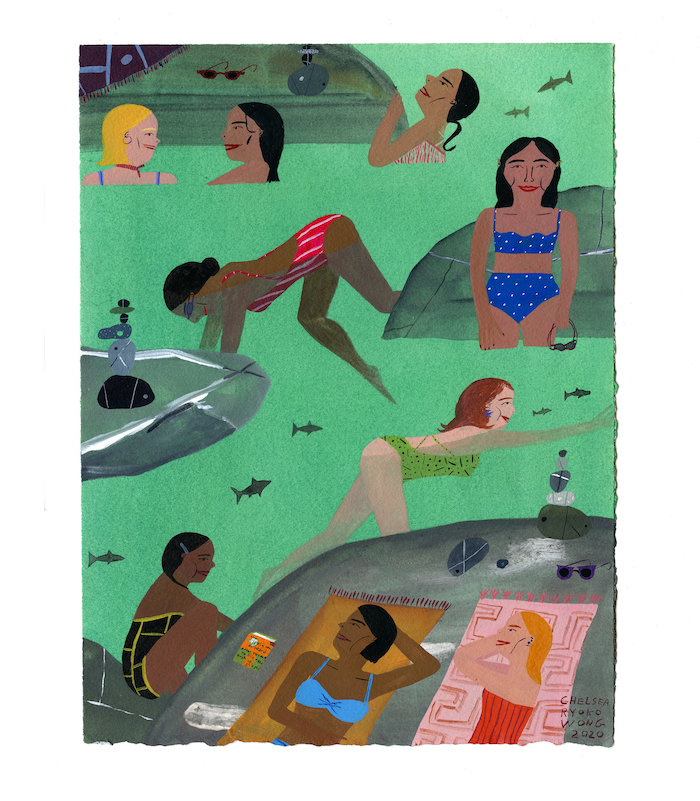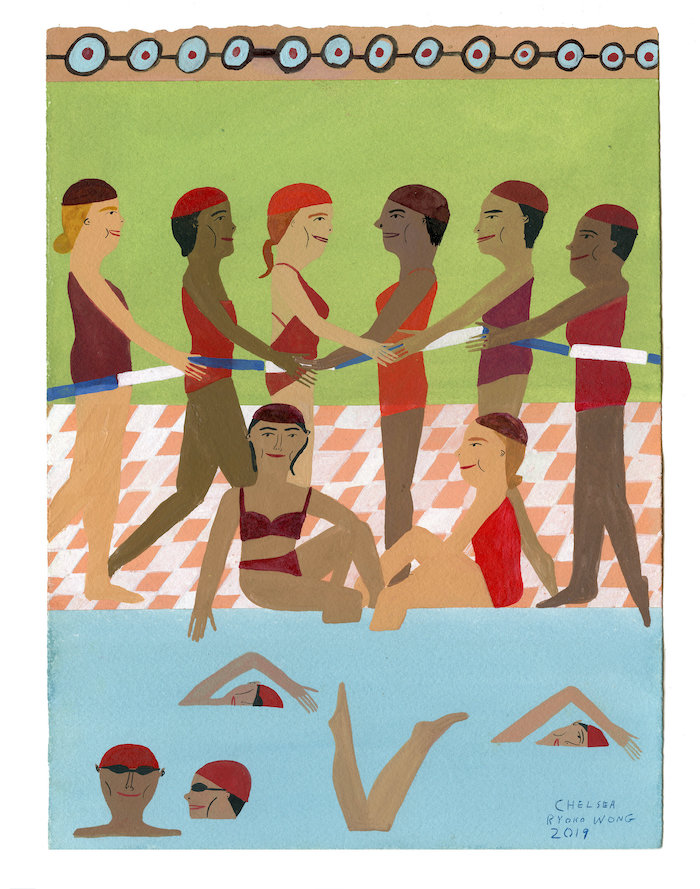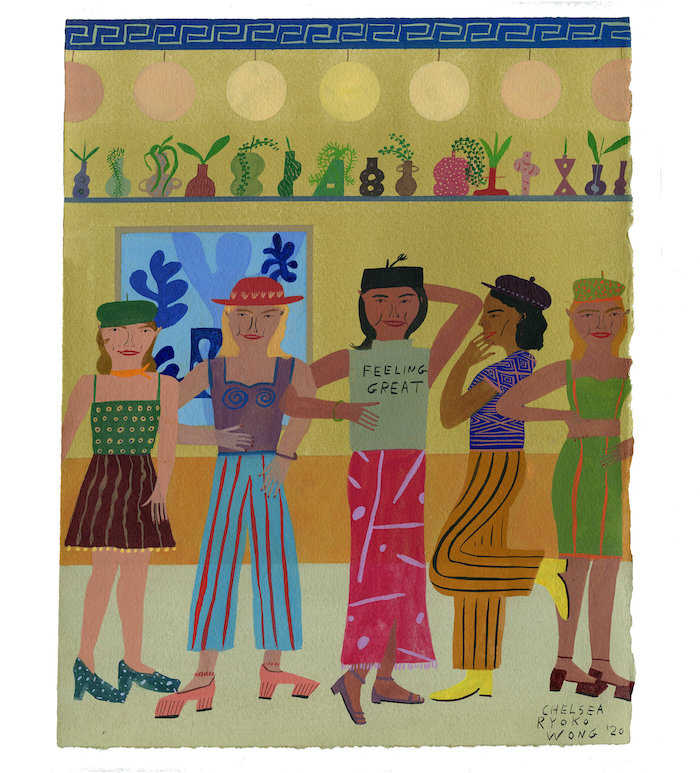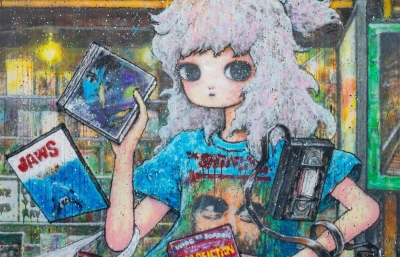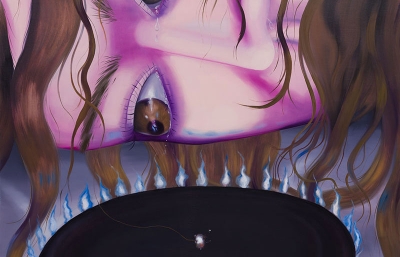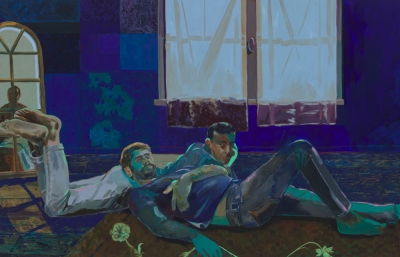Picasso is reputed to have said, “The purpose of art is washing the dust of daily life off our soul.” Chelsea Wong doesn’t deny daily life its grit; she sprinkles it with pixie dust, making all the souls her paintings exemplars of the kind of open-hearted decency and carefree joy for which the rest of us might aspire.
The characters in Wong’s paintings suggest they harbor secret sorrows, worries, and disappointment. Read the text woven through scenes onto t-shirts or around the borders of some paintings and note that while they don’t live in perfect worlds, their expressions and actions display affirmation to take charge and celebrate the common pleasures the world affords. 
Stronger Everyday, Unstoppable is populated with three dozen or so smiling human beings of various cultural backgrounds, each complementing the other through gesture, attire, and outlook. The words of empowered acceptance that run along the top of the paintings are echoed on the chests of various members of the group. “Songs for Energy” harmonizes with “Energizing Self” as “Clear the Mind” melds into “Meditation Realization,” and even a mantra for the more introverted among us, “Friendship cures loneliness but a pet rock will do.”
Wong’s art is timeless, but as with everything in these days of Covid-19 quarantine and wide-spread protests of racial injustice, the impact of the world that Wong creates is even more striking. Hands touch, arms link, hugs happen, and people simply link together without the weight of the world throwing roadblocks. Scenes capture easy physical proximity in ways that now seem anachronistic. We view a painting like Rooftop Marakech Casual Soire, containing the phrase “a fine day to be alive,” with a mixture of melancholy and incredulity.
The paintings, however, are no less profound for their straightforward innocence. More haiku than theoretical or process-driven, they arrived unpacked, and the easy jocularity and quotidian subject matter belie Wong’s skill as a composer. With minimal marks and design detail, she creates a diverse assemblage of personalities, each bearing a unique presence on the scene. As with many of Joan Brown’s flat figurative portraits, which also employ particular color choices, costumes and stripped down character cues as story-telling devices, Wong’s vignettes take on a dramatic quality. Her figures become iconic, larger than life, a combination of direct and honest charm devoid of distracting detail.
Wong’s practice as a muralist seems to enable her in elevating the everyday. Dramatized scenes suggest a film poster effect in which the collective vibe endures like John Van Hamersveld’s three contrasting day-glo colors and abstracted surfers silhouetted in black against a symmetrical sun for the film Endless Summer. So clean and simple, but capturing absolutely everything about the choice of how one wishes to move through the world.
Wong is a skilled and inventive colorist. For the small and medium sized works on paper, she employs a broad range of watercolor and gouache. The larger paintings -- a new foray for the artist -- are acrylic on canvas. In all cases, her deft use of harmonizing and contrasting hues both surprise and delight. Imagine Josef Albers entering this realm after a pitcher of tequila sunrises. In the painting Moonrise over Muscles, one character offers a starfish to another, a shared, open invitation that represents Wong’s gracious gift to her audience. —Tamsin Smith
Chelsea Ryoko Wong, San Francisco-based painter and muralist, studied at Parsons School of Design in NYC and completed her BA at California College of the Arts in printmaking in 2010. She can be found at @chelsearwong on Instagram or at her website: https://chelseawong.com/. Her show at Legion SF is viewable online.



